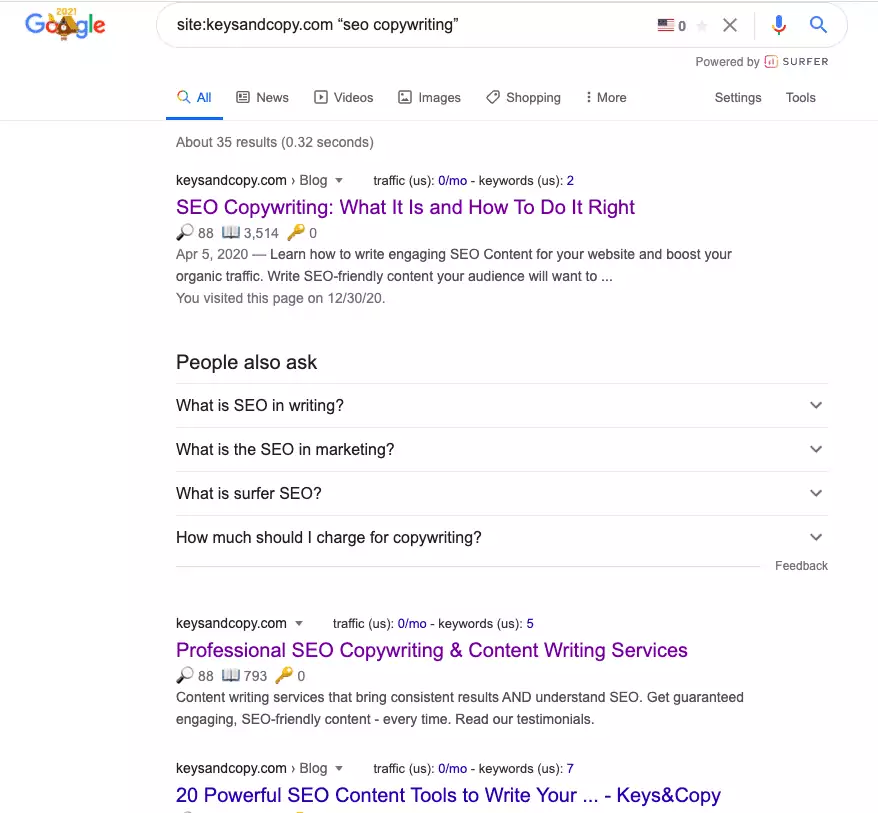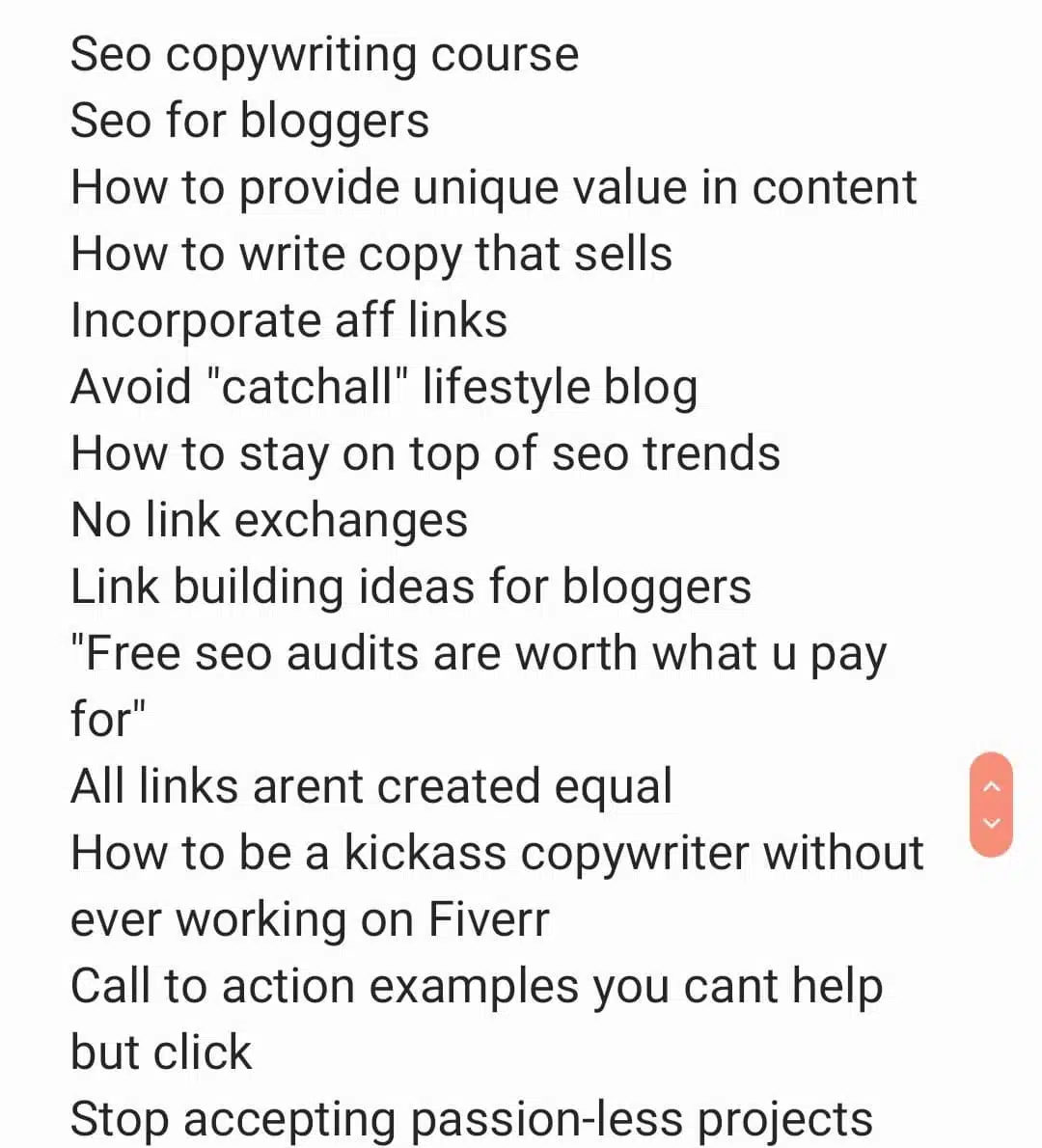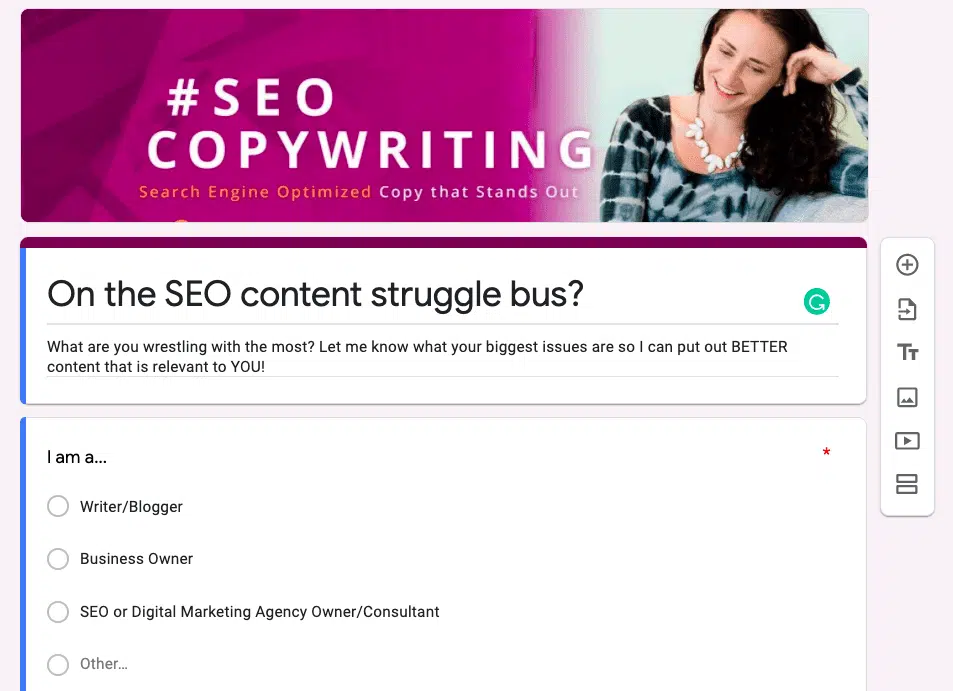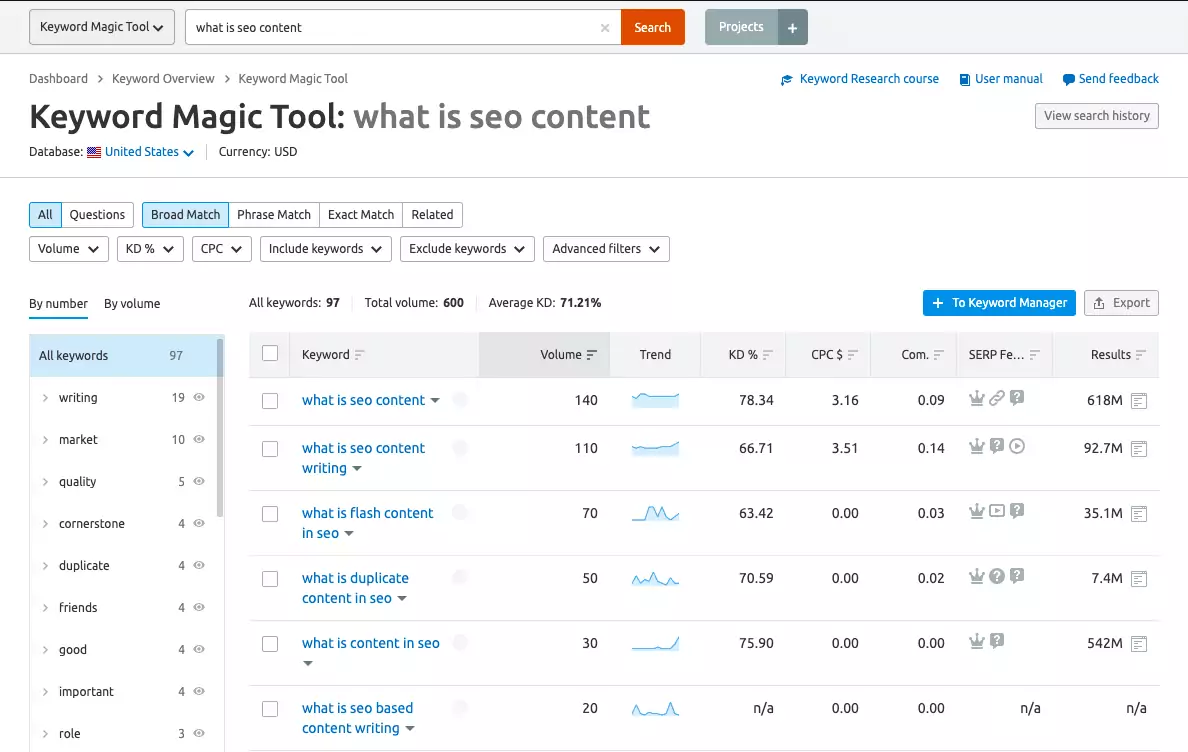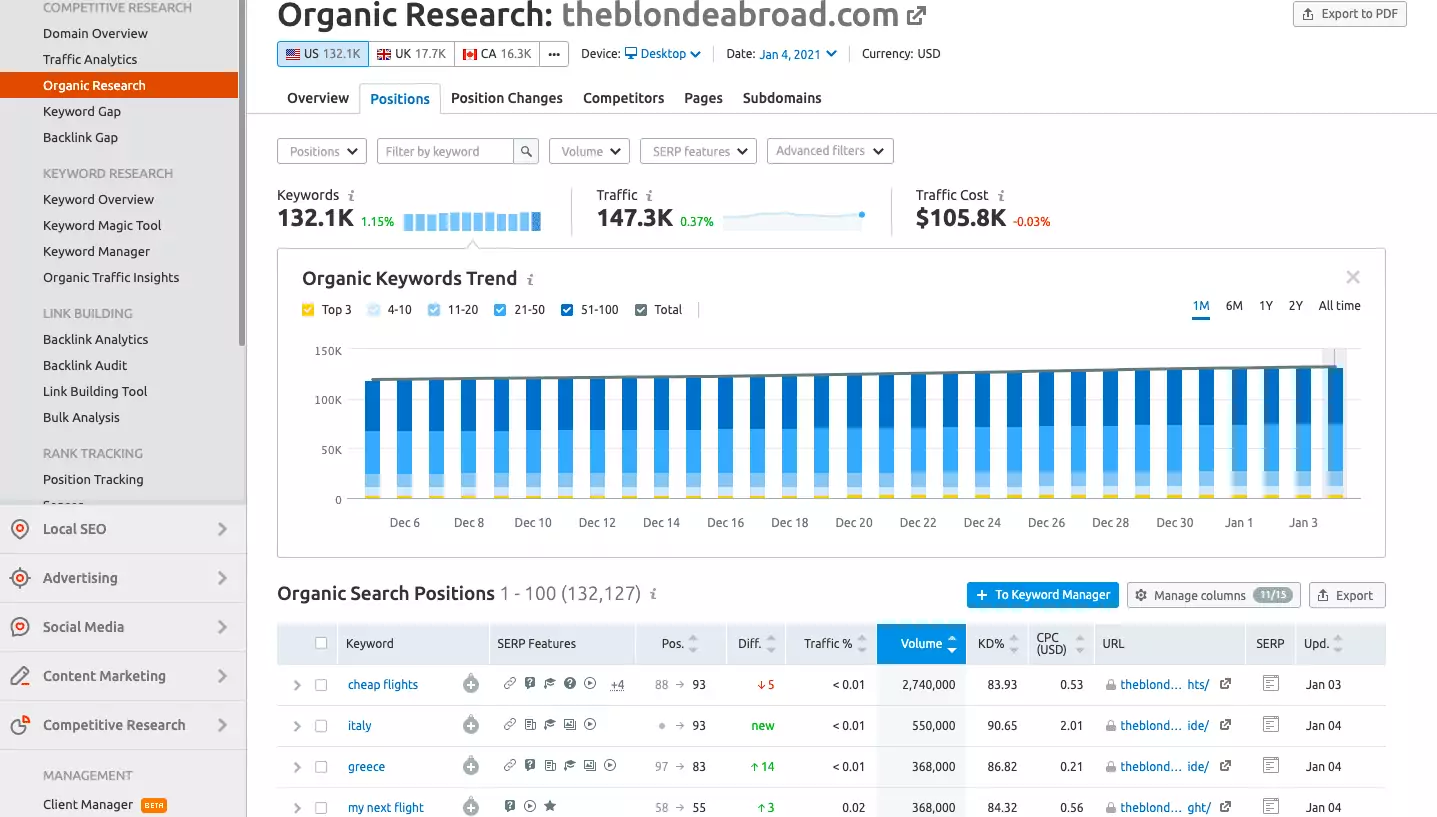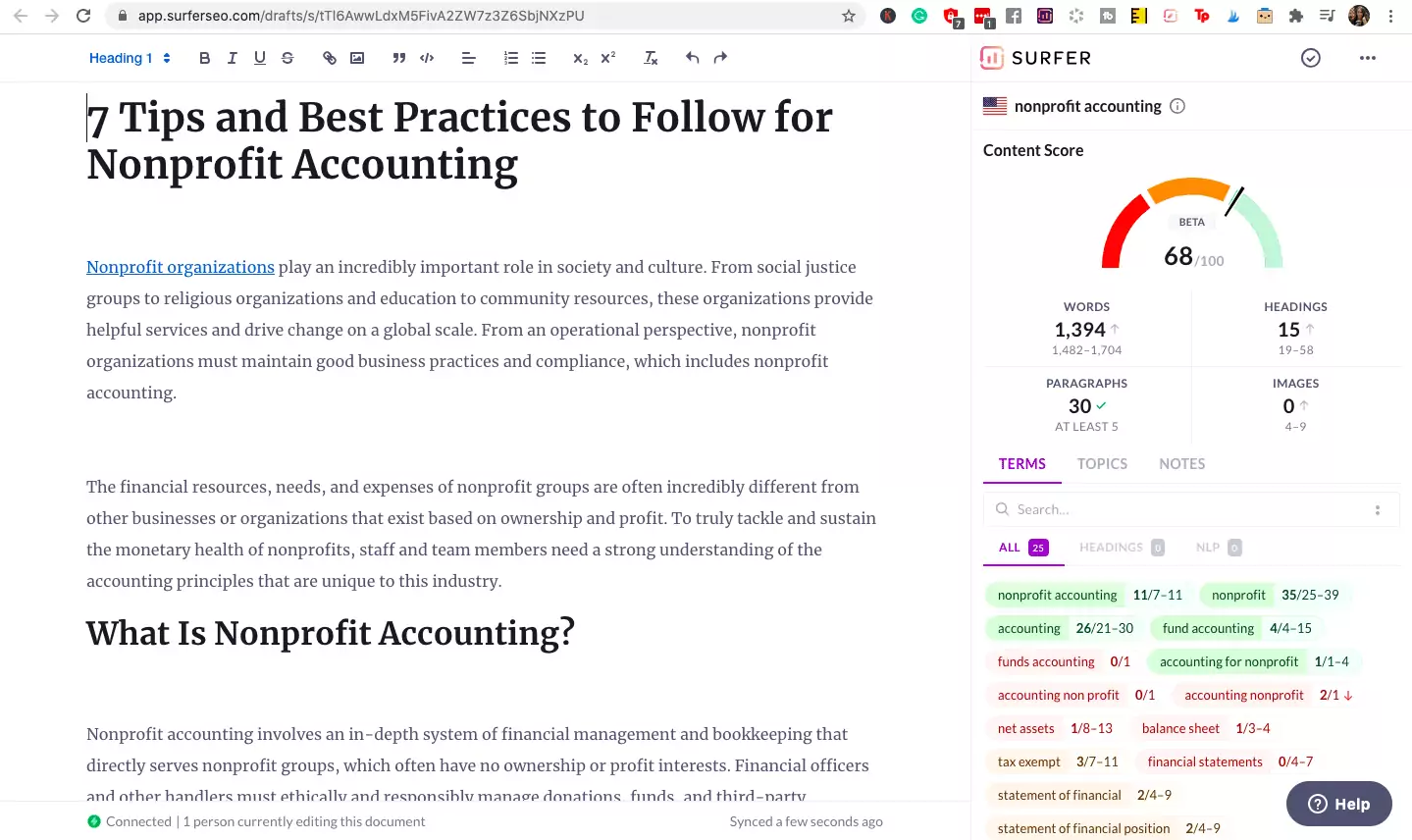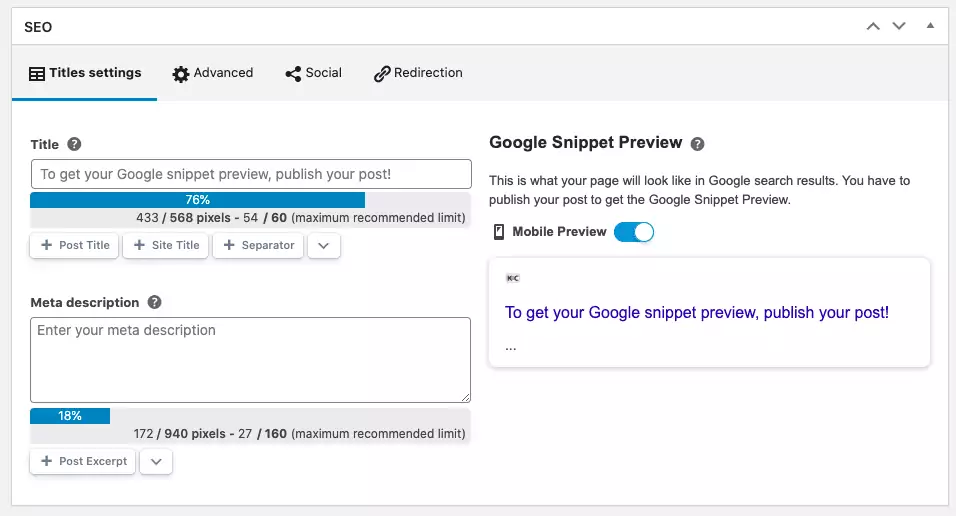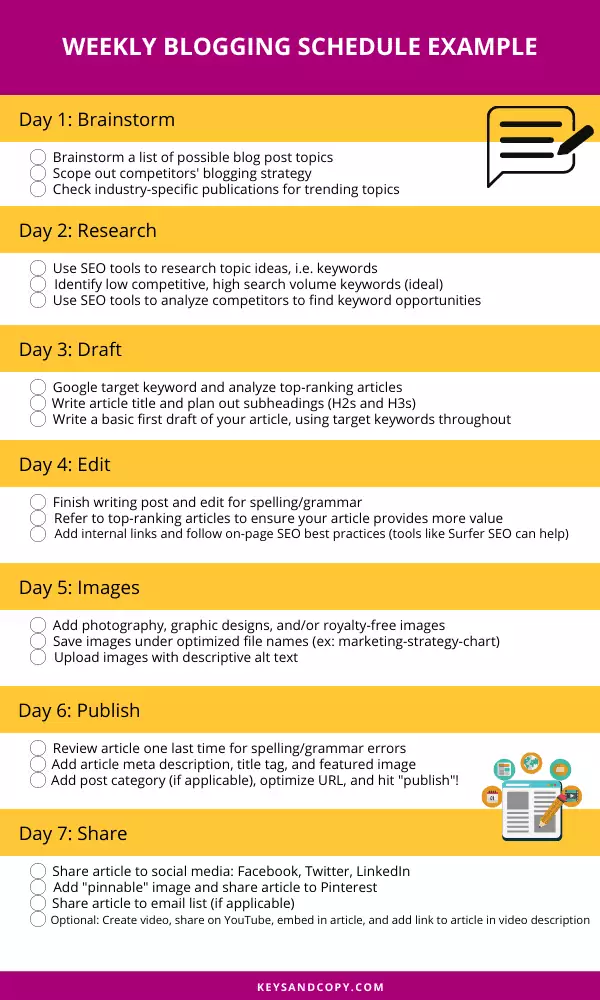Time. Consistency. Motivation—Three things many of us feel we don’t have enough of… especially when it comes to keeping up with our blog.
Carving out time to write, publish, and share our blog posts can seem like a chore, which makes creating an effective, time-saving blog schedule an essential task. Having a plan—and sticking with it—is key to staying on track and keeping the blog traffic flowing.
In this guide, you’ll learn how to plan your SEO content and create a blogging calendar you’ll actually stick with so you can generate more traffic on a consistent basis.
No fancy tools necessary!
Why is Having a Blog Schedule Important?
As a blogger or business owner, you might find it easier to write blog articles simply when inspiration strikes. Perhaps you have an idea pop into your head, so you turn on your computer and type away. But though you may find the motivation to write, creating content “off the cuff” is hardly a “strategy”.
Having a blog schedule is important for several reasons:
- A blog schedule forces you to be intentional with your writing, planning out content that’s meant to drive traffic and convert visitors into subscribers or customers.
- Creating a blog post schedule motivates you to publish great content on a consistent basis so you can stay ahead of the competition and rise to the top of the Google search results.
Blogging consistently is a key part of having an effective Search Engine Optimization strategy. So, if you want to drive more organic traffic, planning out your content is an essential first step.
Let’s Look at the Stats…
Not only will having a blog schedule help you put out more content on a regular basis, but it will also ensure that every blog post is researched, written, and optimized for organic search. It only takes looking at these blogging stats to see just how powerful blogging can be:
- Companies that blog get 97% more backlinks to their websites.
- Websites that also have a blog are shown to have 434% more indexed pages.
- There are about 70 million posts being published each month on WordPress.
- Bloggers who write articles of 2,000+ words are far more likely to see positive results.
- 77% of internet users read blog posts.
- Internet users in the US spend 3X more time on blogs than they do on email.
This is just the tip of the iceberg when it comes to the many benefits that having a blog schedule can bring. If you want to maximize your site’s traffic-generating potential, attract more subscribers, and turn visitors into potential customers, then you need a blog post schedule that works.
How to Plan the Perfect Blogging Schedule
Creating a blog schedule may seem like a daunting task, but it can actually be fun!
You get to plan out your blog articles for weeks or even months at a time, making it easier to know what to write about and when. And, you can rest easy knowing that all of your articles are being written with SEO in mind.
Ready to get started? Here are 12 steps to creating the perfect blog schedule:
1. Take Inventory of Your Existing Blog Posts
It seems like an obvious mistake, but it’s one I see website owners making over and over again: publishing multiple blog posts on the same topic. Now, you certainly want to write articles that align with your niche, but you don’t want to end up targeting the same keyword across multiple articles.
If you have an “Aha!” idea for an article, make sure you take a moment to take inventory of what already exists on your site. It can be easy to forget that you wrote on that same exact topic in 2015… and in 2017… and you get the idea.
You can use several methods to see what articles you have already published on your site (without going through one blog page at a time). You can:
- Use a free crawling tool like Screaming Frog to see all the URLs on your website.
- Conduct a site search by searching site:domain.com “topic”. For example, if I want to see if I have written any other articles about SEO copywriting, I would Google site:keysandcopy.com “seo copywriting”. This will identify all of the related articles and pages on this topic that have been indexed by Google.
In doing this, you’ll be able to avoid writing an article that’s already been written AND you might identify some gaps to fill with new content.
2. “Brain Dump” Topic Ideas
One of the most common questions I get in my Facebook Group is “How do I come up with interesting blog post ideas?”. And while I wish there was a super straightforward, 5-step process to coming up with article ideas, oftentimes it’s simply easier and more productive to do a “brain dump” of anything you can come up with.
You know your business (or blog) best, so you’re in the best position to think of topics that relate to the overall focus of your site. If you create a long-running list of ideas, you can always pare this down later – using the steps I cover later in this guide.
One of my best methods for coming up with drool-worthy blog post ideas is to create a list in my phone that I can add to whenever a new idea comes to mind. Inspiration can strike when you least expect it.
The goal is to come up with topics that are at least somewhat related to:
- The service you offer
- The product(s) you sell
- The people you work with/your target audience
- The questions your audience would like you to answer
- Topics that are trending in your industry
For example, since I have a website that is mainly about SEO copywriting, my list looks something like:
- What is SEO copywriting
- SEO copywriting tips
- How to write a blog post
- How to come up with blog post ideas
- How much SEO content costs
- SEO for content writers
- On-page SEO best practices
- How long should a blog post be
Now, not all of these topics will turn into articles. This is highly dependent on the keyword research I end up doing on each of these topics—that is, do they have ample search volume? But this list is a good start and I can continue to build off of it as new ideas pop into my head.
3. Survey Your Audience
If you are totally stumped when it comes to drumming up content ideas, then a good place to start is with surveying your audience. In fact, I recommend this for any blogger or business owner, as your audience can be a treasure trove of blog post ideas if you only take the time to ask.
After all, your goal is to write content that your target audience is interested in. If you survey them to find out what their questions are, what they are struggling with, etc., you’ll find tons of topics that you can later turn into blog articles.
Follow these steps to create an audience survey:
1. Log into Google Forms to create a new survey (or you can use software like Typeform for this).
2. Create an anonymous survey that asks your audience questions related to the main topic of your site/blog, like:
- What is your biggest challenge when it comes to [ topic ]?
- What solutions have you tried in order to fix/overcome [ challenge ]?
- What are your favorite [ topic ]-related blogs to read?
- What is your #1 goal when it comes to [ topic ]?
3. Ask your existing target audience, or reach out to people on social media, in Facebook Groups, etc., to answer these questions.
4. Make a note of the common questions/concerns/topics that come up so you can later turn these into blog posts.
It’s important that you reach out to people who best match your target audience, not random people who are unlikely to be interested in your services. For example, since I write about SEO copywriting, I am more likely to target agencies and bloggers than yoga instructors or lifestyle coaches, who are unlikely to need my services.
I have a more in-depth guide on how to conduct market research so you can define your business’s Unique Selling Proposition and come up with audience-focused content ideas.
4. Conduct SEO Keyword Research
Once you have your brain dump list of topic ideas, as well as some input from your audience, you can use keyword research tools like SEMRush to figure out which of these topic ideas align with high search volume, low competition keywords.
Simply plug in your topic idea into SEMRush’s Keyword Magic Tool (it’s free) and it will show you whether the term you entered has ample search volume, as well as related keywords you might want to consider. You might want to try out some variations until you have a list of keywords that make sense for future blog articles.
You’re likely to uncover some keywords you hadn’t thought of before, and then you can add these to your list of topic ideas. Your goal is to find keywords that:
- Have at least some search volume (the more the better)
- AND low competition
- AND that makes sense for your website
For example, “what is SEO content” has 140 searches per month but has a KD (keyword difficulty) score of 78%, which may be too competitive for my small site. But, the term is highly relevant to my website. Is there a different keyword that might apply that also has a lower competition score?
Many people find keyword research to be the most difficult part of creating a blog calendar, but it doesn’t have to be. Read my guide on how to do SEO keyword research for your blog to take the stress and guesswork out of keyword planning.
5. Scope Out the Competition
Another awesome thing about SEMRush and similar SEO tools is that you can scope out your competitors and snag some keyword ideas that way. This saves you tons of time compared to combing through all of their blog posts for topic ideas.
In SEMRush, simply go to the “Domain Overview” tab and plug in the URL of your competitor’s website. SEMRush will then show you a list of keywords your competitor is ranking for. (Keep in mind that if they are a new/small site, or have not been investing in SEO, that they may not be ranking for any keywords at all. This is good news for you!)
Using a similar process as in Step 4, you can research each of these keywords to see their search volume and competition level, and then decide whether they are a good fit for your own site.
Voila! Even more blog topic ideas.
6. Organize Your Blog Topics
By this step you will have a list of potential blog post ideas based on your “brain dump”, market research survey, keyword research, and competitor research. Now it’s just a matter of organizing these topics into a blog schedule you’ll actually stick with.
Fortunately, you’ve already done the keyword research to know that the topics you have chosen have ample search volume, so you won’t be wasting your time writing articles that have zero potential for generating organic traffic. You’ll also know that most of your articles will be of interest to your potential audience.
Here’s how I recommend organizing your blog topics into an effective blog calendar:
- Open up a new Google Sheet or Excel spreadsheet.
- Create a column for each of these labels: Month, Due Date, Draft, Status, Focus Keyword, Search Volume, Competition, Secondary Keyword(s), Title, Word Count, Internal Links, and Resources.
-
- Fill in the “Focus Keyword” column with the keywords you identified in Steps 4 and 5. Also, fill out the “Search Volume” and “Competition” columns for each of these keywords.
- If you have additional keywords that closely align with your Focus Keyword, but aren’t the main focus of your article, feel free to add these to the “Secondary Keyword(s)” column.
- Fill in the remaining columns as you collect more information for each of your articles:
-
- For the “Title”, this should be based on a Google search for your Focus Keyword to help you come up with an article title that’s better than what’s already ranking.
- The “Internal Links” column is for any other pages/articles on your site that you want to link to within your new article.
- The “Word Count” should be a close average of the top articles that are already ranking for your Focus Keyword, but this is not a hard rule. (See: How Long Should a Blog Post Be?)
- “Resources” includes miscellaneous items you might want to reference, like an ebook you want to include in your article, or a similar guide you want to refer back to for research purposes.
- The “Month”, “Due Date”, and “Status” columns are all to help you organize your schedule and stay on top of your blogging editorial calendar.
- “Draft” is for the first draft of your article if you choose to write it first in Google Docs (optional but recommended).
This sheet serves to add structure to your blogging schedule and ensure that you are tackling topics that are based on SEO keywords you’ve found during your research. Without this as your guide, you risk writing articles with no keyword focus, wasting your time on topics that won’t generate organic traffic.
I know having a Google Sheet as your blog calendar isn’t sexy, but it is effective. Next, we’ll talk about how to finalize your editorial calendar and make it easier to churn out content on a consistent basis.
7. Finalize Your Blogging Calendar
After filling out your blogging calendar, you might feel like it’s a mish-mash of topic ideas with no clear “flow” or organization. This is to be expected. Hence why it’s essential to fine-tune your calendar and then finalize the details.
Organizing by Priority
The goal in this step is to organize your topics in terms of priority. In SEO, this is known as taking on a sort of “pillar” structure of writing blog articles that cover broader topics and then branching off from there.
For example, I know I want to cover topics related to SEO copywriting, but before I start writing about the nuances of different techniques, I first need to discuss what SEO copywriting is.
So, my blog schedule might be organized something like this:
This way, I am starting with broader, “evergreen” content and gradually branching off to target related keywords.
I cover how to organize your blogging schedule based on priority and much more in my latest FREE ebook. You can download the SEO Content Roadmap here!
8. Use Project Management Tools
The Google Sheets blog calendar may not be sexy, but blog scheduling tools can be 😉 Having at least one of these in your virtual toolbox will help you stay on task and stick with your blogging schedule every month.
I like to use Asana to schedule out my blog articles. To do this, I simply copy/paste the “Focus Keyword” column from my Google Sheet into Asana, add the due dates, assign my name, and then I have an organized task list to ensure I stick with my blog schedule.
Of course, there are many types of project management tools, such as Monday.com or Trello, that can help with this as well. So, if you’re a visual person who would prefer to have an organized task list, using one of these tools will be incredibly helpful.
9. Write Your First Draft
You have your target keywords, you have your blog topics organized, and you have a schedule you can actually stick to. Now it’s time for the fun part: writing your content!
I don’t recommend writing an article all in one sitting in hopes of publishing it that day. This rarely happens. Most often, you will need to make edits, add images, optimize sections, etc. before you are ready to publish.
I like to use Google Docs to write the first draft of my article so I can save my work and make as many edits as I need before I upload it to my blog. It also makes it easy to copy and paste my content into Surfer SEO’s Content Editor so I can optimize my work, adjust the formatting, and then upload it to my WordPress website.
Writing a draft first will help you get most of your thoughts and research down on “paper” so you can finesse it later and publish the perfect blog post. It also splits up your workload so you’re not scrambling to write, optimize, edit, and publish all in one day.
10. Add Images and Photos
You should also consider the time it takes to source images, screenshots, gifs, and videos to add to your articles. This is not something that should be left to the last minute, as including high-quality images is an important part of creating an SEO-friendly article.
If you don’t have the budget or skills for custom photography, graphic design, or stock images, then you can create your own graphics in Canva. I highly recommend this over sourcing images from the internet, as you don’t want to risk getting dinged for copyright infringement.
11. Hit “Publish”
If you are writing your articles for SEO purposes, there are a few things you need to do before you hit “Publish”.
These tasks include:
- Adding a post title to your article
- Adding a meta description to your article
- Adding internal links within your article (to other posts or pages on your site)
- Optimizing your image file sizes, alt text, and file names
- Including external links to outside sources (if applicable)
- Adding a “featured image” to your article
- Checking your article for spelling and grammar errors
Most Content Management Systems (CMS’s) make ticking off these boxes simple by including the relevant fields right there where you are uploading your article. Other tasks involve optimizing your images, etc. outside of your CMS.
If, however, you are struggling to optimize your article, you might want to download a plugin like Yoast SEO that includes some of these fields for you.
12. Share and Engage
The final step is to share your article with the world and engage with people who share/like/comment on your article on social media. As tempting as it can be to just click “Publish” and leave it at that, it’s good to maximize your traffic by sharing your content across multiple platforms.
Don’t have time to share your content manually? Some of the best blog scheduling tools and apps include:
- Buffer
- Hootsuite
- Tailwind (for Pinterest)
- SocialPilot
- Coschedule
- Zoho Social
These tools will help you share your articles far and wide, and you can even automate this process so they share your post right after it’s published.
My Blogging Schedule Example:
In Step 6 I showed you a blog post schedule template you can follow to organize your keywords, map out your post topics, and schedule your articles. But it might also help to have a simplified blog “to-do list” you can follow when it comes time to create your blogging calendar.
Feel free to save this, post it on your desktop, or put it in an obvious place so you have a simple process for creating your blog schedule every month:
How Often Should You Blog in 2021?
Most blogs should publish once or twice per week in order to stay competitive with other sites in their niche. This gives you ample opportunity to target a variety of keywords and maximize your organic traffic. However, publishing even once a month is enough to stay consistent and give you the chance to go more in-depth on a given topic. Quality > Quantity.
What is the Best Time to Post a Blog?
The best time to publish a blog post depends on your timezone, niche, and target audience. However, one study suggests that Sunday is the best day to publish, but that Tuesday, Wednesday, and Thursday were the most popular days for bloggers to publish. This same study found 10 am to be the most popular time.
It’s best to find a schedule you can stay consistent with and that drums up the most engagement from your unique audience.
5 Tips for Staying Consistent with Your Blog
Are you struggling to stay consistent with your blogging schedule? Here are a few tips for staying on task and churning out content on a regular basis.
1. Keep a Running List of Blog Post Ideas
It’s hard to stay consistent when you don’t know what you write about. By having a running list of blog topics you can add to over time, you will always have some ideas to fall back on. Also, using the keyword research and competitor research steps in this guide will ensure that you’ll never be short on blog article ideas.
2. Set Reminders on Your Phone or Computer
Set notifications in your phone calendar or on your computer to remind you of when a new draft is due, when you need to publish, or when it’s time to brainstorm some new post topics. Automating these reminders to pop up on the same day every week or every month will help you establish a blogging routine.
3. Use Project Management Software
You can also download project management apps to your phone to organize your tasks, set reminders, add details to your projects, and more. I use Asana to schedule out my blog articles but you can also use Monday.com, Trello, or any other project management software.
4. Have Your Audience Hold You Accountable
Oftentimes I will post on social media that I am about to release a new article/guide (like this one) to get my audience hyped up prior to its publish date. Doing this helps hold me accountable to publishing on time and has the added benefit of drumming up interest from my audience before the post is even live.
5. Set Blogging Goals
It’s helpful to set tangible goals for your blog so you have something to work toward. Having goals will help keep you motivated and prevent you from feeling burnt out from not seeing the payoff from your efforts. You can set goals around publishing a certain number of articles per week, increasing your traffic numbers, getting more social shares, etc. Add these goals as milestones in your calendar to inspire you to keep blogging!
Schedule Your Blog Posts Like a Pro
Building out an effective blogging strategy doesn’t have to be complicated, boring, or time-consuming. After following the steps in this guide, you’ll have blog posts planned out for weeks or potentially months to come. Plus, you can rest easy knowing all of your blog ideas are based on SEO-friendly keywords.
Have questions about how to grow your blog? Let me know in the comments below!

